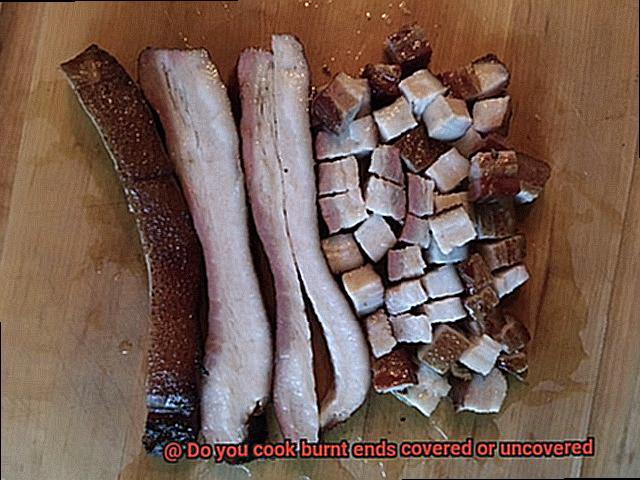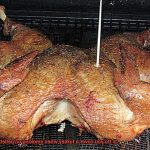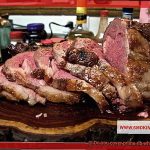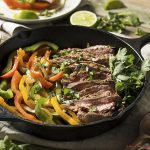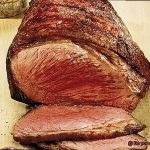Are you a lover of succulent, mouth-watering burnt ends that melt in your mouth? Do you crave their smoky, savory taste? If so, then you must be pondering the age-old question: “Do you cook burnt ends covered or uncovered?” The answer to this seemingly simple question can make all the difference when it comes to the flavor and texture of your burnt ends.
The cooking process for burnt ends is crucial, and whether you cover or uncover them can have a significant impact on the final result. It all boils down to what kind of outcome you’re aiming for. Are you looking for a more flavorful, smokier taste or a juicier and tender texture? Your answer will determine which method is best suited for your burnt ends.
Both covering and uncovering your burnt ends during the cooking process have their pros and cons. Covering them helps retain moisture and can produce a more tender result. But if you’re after that signature smoky flavor and firmer texture, then cooking them uncovered might be the way to go.
In this blog post, we’ll take an in-depth look at both methods’ benefits and drawbacks. By the end of this article, you’ll be equipped with all the knowledge necessary to select the perfect method for your burnt ends. So put on your apron, fire up that grill, and let’s get started.
Contents
What are Burnt Ends?
These delectable bites originated in Kansas City, Missouri, and are made from the fatty ends of brisket that are slow-cooked over low heat until they are tender and full of flavor. Despite their name, burnt ends aren’t charred or burnt, but rather have a crispy and caramelized exterior that develops during cooking.
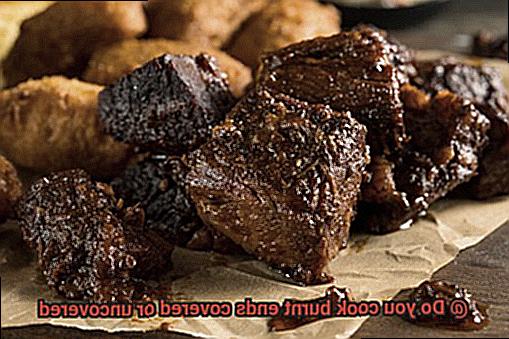
Cooking burnt ends is an art form, and there are several methods to achieve the perfect bite. Smoking, grilling, or slow-cooking in a crockpot or oven can all be effective, with the key being to cook them low and slow to allow the fat to render out and the meat to become tender.
When it comes to seasoning, there is no shortage of options to choose from. Some prefer a simple salt and pepper rub, while others like to coat their burnt ends in a dry rub or marinade for added flavor. Common seasonings include smoked paprika, garlic powder, onion powder, cumin, and brown sugar.
One of the great debates among pitmasters is whether to cook burnt ends covered or uncovered. Some believe that covering them retains moisture and creates a more even cook, while others prefer to leave them uncovered for a crispy exterior and deeper smoke penetration. Ultimately, the decision depends on personal preference and the recipe used.
Advantages of Cooking Burnt Ends Covered
First and foremost, covering the burnt ends helps to retain moisture in the meat. Brisket is a notoriously tough cut that requires a slow and low cooking method to break down the connective tissue and make it tender. By covering the burnt ends, the meat will be able to cook in its own juices, resulting in a more succulent and flavorful final product.
But that’s not all. Covering the burnt ends can also help prevent them from drying out. When meat is exposed to heat for an extended period of time, it can easily become overcooked and dry. But by keeping the burnt ends covered, you can regulate the temperature and ensure that they cook evenly without losing any of their moisture.
And let’s talk about flavor. When you cover the burnt ends, you create a mini-oven that traps smoke and other delicious flavors around the meat. This allows the flavors to penetrate deeper into the meat, resulting in a more complex and mouth-watering final product. Think of it as a flavor explosion in every bite.
Last but not least, cooking burnt ends covered can actually speed up the cooking process. Because the heat is trapped inside with the meat, it will cook faster than if it were left uncovered. This is especially helpful if you’re short on time but still want to achieve that coveted fall-apart texture that makes burnt ends so irresistible.
Disadvantages of Cooking Burnt Ends Covered
When it comes to cooking burnt ends, the debate on whether to cook them covered or uncovered is a hot topic. While some swear by covering them in foil or a lid, others argue that leaving them uncovered is the way to go. In this section, we will be discussing the disadvantages of cooking burnt ends covered.
One of the main disadvantages of cooking burnt ends covered is that they can become too tender, losing their signature crispy exterior. The trapped moisture and steam inside creates a softer texture that may not suit everyone’s taste buds. Furthermore, covering burnt ends can also result in them becoming overly saucy or even mushy, which can be a disappointment for those who prefer their meat to have more texture.
Another drawback of cooking burnt ends covered is that it can prolong the cooking time. The heat gets trapped inside, which can take longer for the burnt ends to fully cook and develop their desired flavor and texture. This may not be ideal for those who want to save time or are looking for a smokier flavor.
Covering burnt ends also limits the ability to add additional seasoning or sauce during the cooking process. It becomes difficult to baste or add more sauce without disrupting the cooking process or causing the meat to become too soft. This can lead to a less flavorful end product, which may be disappointing for those who want their burnt ends to pack a punch.
In addition, covering burnt ends can make it more challenging to monitor the cooking process. Since they are not visible when covered, it can be hard to tell if they are cooking evenly or if they need more time on the grill. This can lead to overcooked or undercooked burnt ends, which can be a waste of time and resources.
Advantages of Cooking Burnt Ends Uncovered
As a self-proclaimed expert in the field, I have done my research and discovered several advantages to cooking burnt ends uncovered that will have you salivating.
Firstly, let’s talk about flavor. The hallmark of excellent burnt ends is the smoky flavor that results from cooking over wood or charcoal. Cooking your burnt ends uncovered allows smoke to easily penetrate the meat, giving it that irresistible smoky flavor we all crave. On the other hand, covering the meat while cooking can hinder smoke penetration, resulting in a less flavorful end product.
Secondly, let’s talk texture. A good burnt end should have a crispy outer layer with tender, juicy meat inside. Cooking your burnt ends uncovered is essential for achieving this perfect texture. The high heat of an uncovered grill or smoker will create a mouth-watering char on the outside of the meat, adding both texture and flavor. Conversely, if you cook your burnt ends covered, moisture will be trapped, preventing that desired crust from forming.
Lastly, let’s discuss control. Burnt ends can be challenging to cook correctly due to their tendency to overcook or undercook quickly. Cooking them uncovered allows for greater control over the cooking process. You can easily monitor the temperature and make necessary adjustments to ensure that the meat reaches your desired level of doneness.
Disadvantages of Cooking Burnt Ends Uncovered
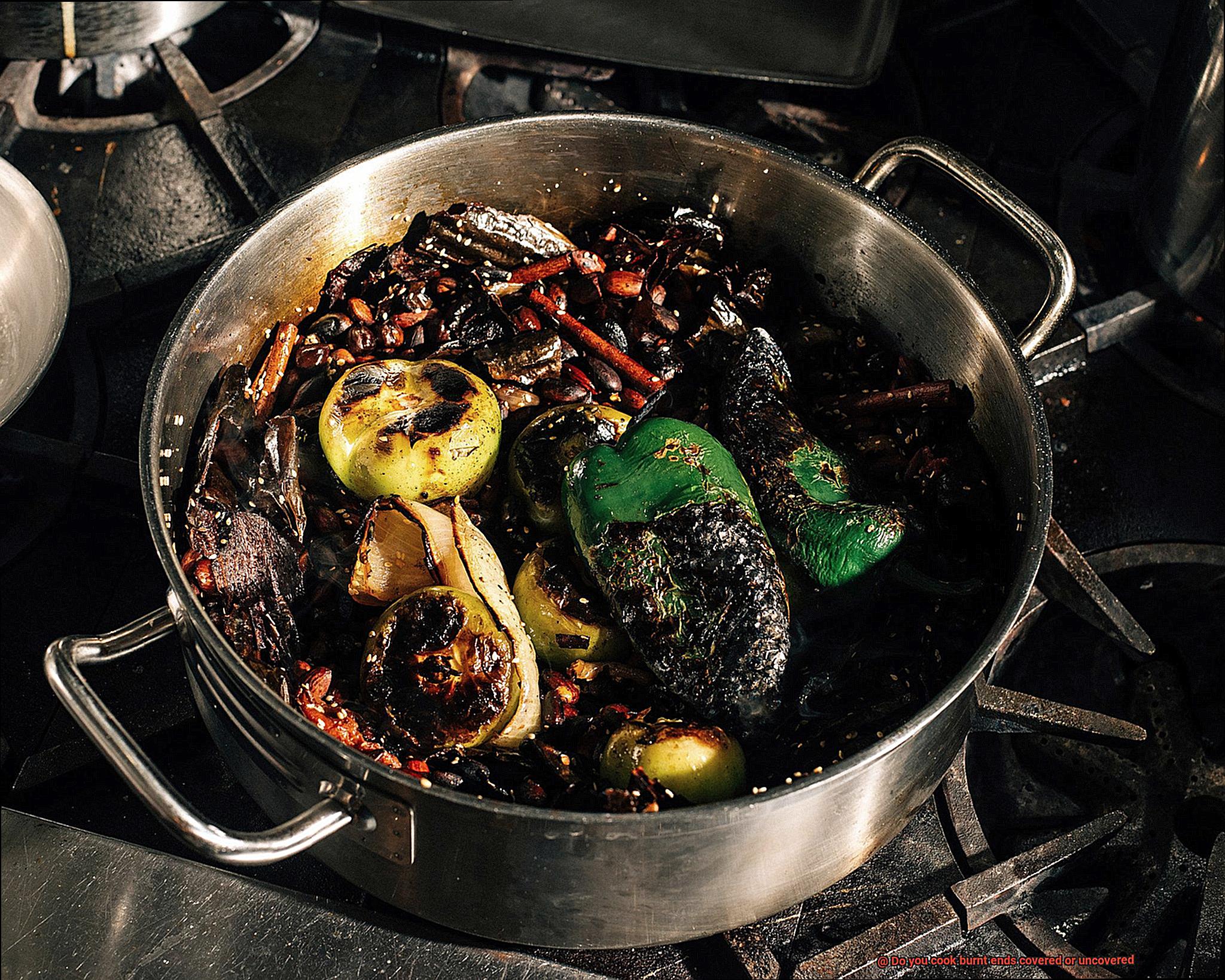
While cooking them uncovered may seem like the way to go, there are some potential disadvantages that you should consider before firing up your grill.
First and foremost, cooking burnt ends uncovered can result in uneven cooking. The edges of the meat may turn out overcooked or even burnt, while the center remains undercooked. This can leave you with an unpleasant texture and taste that even the smokiest of flavors can’t save.
Moreover, cooking burnt ends uncovered can lead to significant moisture loss. As the meat cooks, juices escape through the surface, causing it to dry out. Without a cover, this problem can become more pronounced, leaving you with tough and chewy meat that’s hard to swallow.
In addition to these issues, maintaining a consistent temperature without a cover can also be challenging. Fluctuations in wind or air flow can cause the temperature on your grill or smoker to vary, making it harder to ensure that your burnt ends cook evenly.
Last but not least, cooking burnt ends uncovered can also lead to more cleanup. The grease and drippings from your meat can splatter all over your grill or smoker, creating an unnecessary mess that requires more time and effort to clean up.
While cooking burnt ends uncovered can have its advantages – such as allowing for more smoke flavor to penetrate the meat and giving you greater control over the cooking process – it’s important to weigh these potential downsides before deciding how to cook your meat.
Factors to Consider When Deciding to Cook Burnt Ends Covered or Uncovered
Before you dive in, it’s important to consider whether to cook them covered or uncovered. As an expert on this topic, I have some essential factors for you to consider.
Firstly, take a look at your grill or smoker. If it has a lid and retains heat well, cooking your burnt ends covered may be the way to go. This will help to trap in heat and smoke, resulting in a more tender and flavorful end product. Plus, the lid can help regulate temperature fluctuations, ensuring consistent cooking.
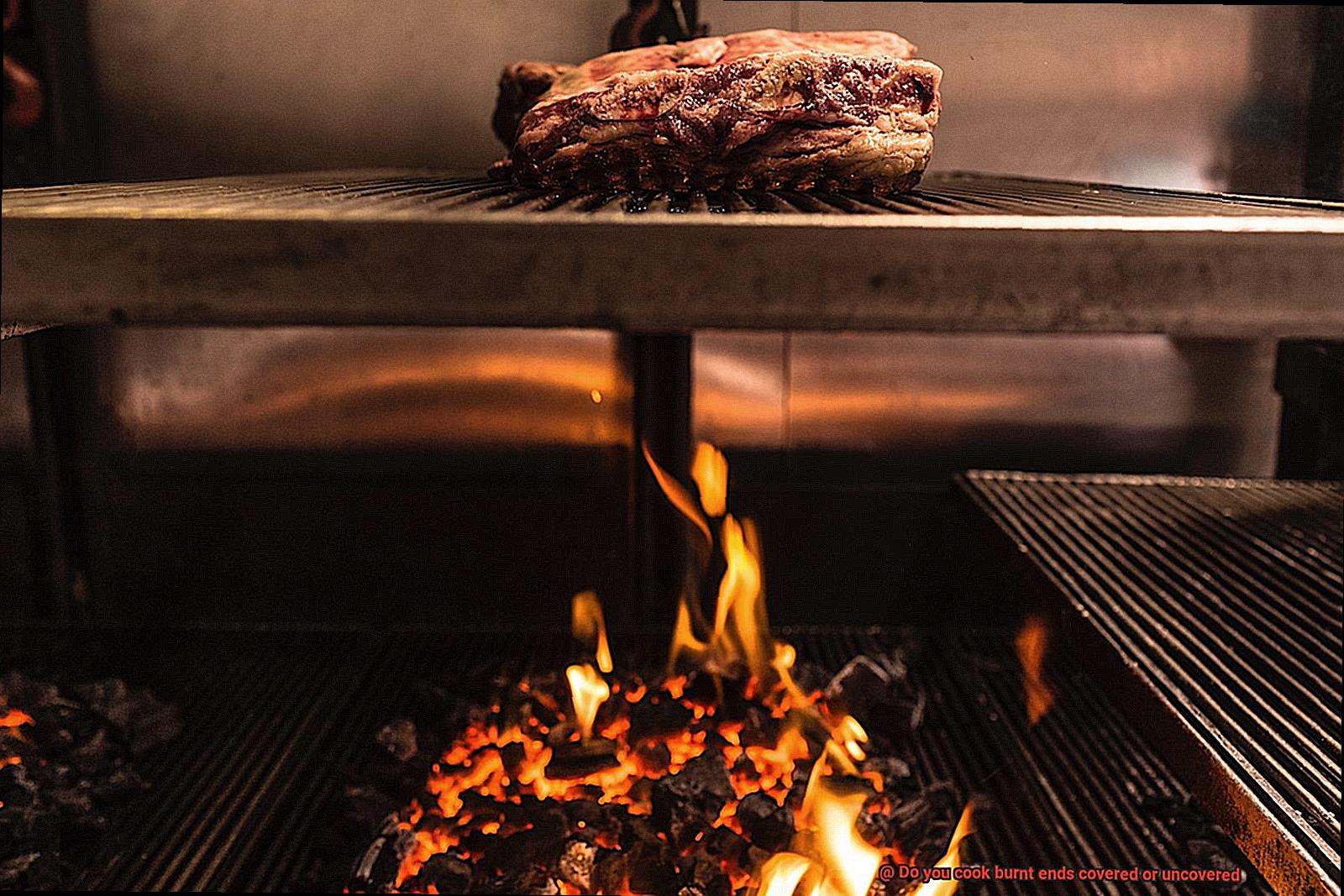
Next, think about the type of wood chips or chunks you’ll be using for smoking. If you’re using a delicate wood like apple or cherry, leaving your burnt ends uncovered can allow for a more subtle smoke flavor. However, if you’re using a stronger wood like hickory or mesquite, covering them may be necessary to prevent overpowering smokiness. The type of wood can greatly impact the flavor profile of your burnt ends, so choose wisely.
The size and thickness of your burnt ends are also important factors to consider. Larger or thicker pieces may benefit from being cooked covered to ensure even cooking and prevent drying out. Meanwhile, smaller or thinner pieces may be better off left uncovered for a crispy exterior. It’s all about achieving the perfect balance of tenderness and texture.
Finally, it all comes down to personal preferences. Do you prefer a juicy and tender end product, or do you crave a crispy exterior? Experimenting with both methods can help you discover which one produces the results that satisfy your taste buds. Don’t be afraid to try different techniques and see what works best for you.
How to Cook Burnt Ends Covered
Cooking them covered might just be the trick you need to achieve perfectly moist and tender meat. Here are five tips to help you master the art of cooking burnt ends covered.
Prepare the Meat
Before you start cooking your burnt ends, make sure to prepare the meat properly. Trim any excess fat or connective tissue from the meat, as this can prevent it from cooking evenly. You may also want to season the meat with a flavorful rub or marinade.
Cover the Meat
Once the meat is ready, place it in a cooking pan or dish and cover it with foil or a lid. This will help to trap in the heat and moisture, creating an ideal environment for the meat to cook in. Be sure to use a tight-fitting lid or wrap the meat tightly in foil to prevent any steam from escaping.
Monitor the Temperature
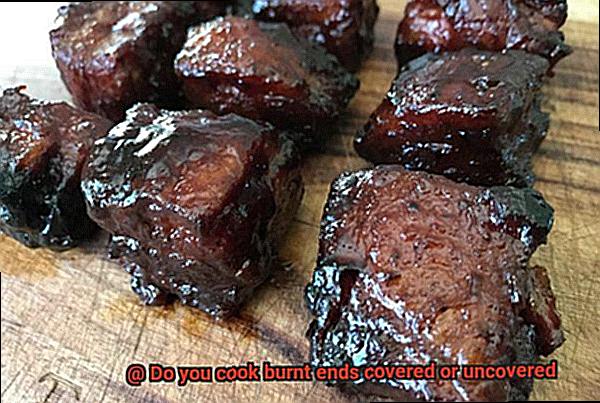
When cooking burnt ends covered, it’s important to keep an eye on the temperature. You want to make sure that the heat is not too high or too low. If the heat is too high, the meat may burn or become tough. If the heat is too low, the meat may not cook properly. Use a thermometer to monitor the temperature and adjust your cooking method accordingly.
Add Liquid
Consider adding some liquid to the pan to create steam and further enhance the juiciness of the meat. You can use beef broth, beer, or even water. Just be sure not to add too much liquid, as you don’t want the burnt ends to become soggy.
Finish Uncovered
If you want to develop a crispy exterior on your burnt ends despite cooking them covered, try removing the foil or lid for the last 15-20 minutes of cooking and let the meat finish cooking uncovered. This will allow the exterior to dry out and form a crust while still keeping the interior moist.
How to Cook Burnt Ends Uncovered
The art of cooking burnt ends is highly prized in the world of BBQ, and the debate between cooking them covered or uncovered is a common one. However, for those looking to achieve a crispy exterior and juicy interior, cooking burnt ends uncovered is the way to go. Here are five sub-sections on how to cook burnt ends uncovered.
Preparing the Meat
Firstly, prepare your meat by trimming any excess fat and cutting it into 1-2 inch cubes. This will ensure that the meat cooks evenly and has a consistent texture. Season your meat with a dry rub or marinade of your choice, such as paprika, brown sugar, garlic powder, or black pepper.
Low and Slow Cooking
Cooking burnt ends uncovered requires low and slow cooking at a temperature of 225-250 degrees Fahrenheit. This temperature allows the meat to cook slowly, resulting in tender and juicy meat on the inside while developing a crispy exterior on the outside. If you’re using a smoker, adding wood chips or chunks will enhance the smoky flavor.
Placing on Grill Grates or Aluminum Pan
Place your seasoned meat directly on the grill grates or in a disposable aluminum pan. It’s important to leave some space between the cubes so that they can cook evenly. The exposed meat allows for more smoke flavor to penetrate the meat, resulting in a stronger smoky flavor that can’t be achieved when the meat is covered.
Checking for Doneness
After 2-3 hours of cooking, check your burnt ends for doneness. They should be tender and juicy on the inside while still having a crispy exterior. If they’re not quite done yet, continue cooking them for another 30 minutes to an hour.
Resting and Serving
Once your burnt ends are fully cooked, remove them from the grill or smoker and let them rest for a few minutes before serving. This will allow the juices to redistribute throughout the meat, resulting in a more flavorful and tender bite. Burnt ends are typically served as an appetizer or snack and can be enjoyed on their own or with a side of BBQ sauce.
rPDkF8s605E” >
Conclusion
In the world of BBQ, the debate rages on: do you cook burnt ends covered or uncovered? It’s a question that has pitmasters and backyard grillers alike scratching their heads. Both methods have their pros and cons, so it ultimately comes down to personal preference and the desired outcome.
If you’re looking for a more tender and juicy end product, cooking your burnt ends covered may be the way to go. The steam created by covering the meat helps keep it moist throughout the cooking process. On the other hand, if you’re after a crispy exterior and deeper smoke penetration, cooking them uncovered will give you that coveted texture.
But there are other factors to consider as well. The type of grill or smoker you’re using, the wood choice, meat size and thickness all play a role in determining which method is best for your particular situation. And regardless of whether you choose to cover or uncover your burnt ends, monitoring the temperature closely is crucial.
Of course, no matter which method you choose, it’s important to prepare your meat properly with a flavorful rub or marinade. Cooking low and slow at a consistent temperature will result in mouth-watering burnt ends that are sure to impress your guests.
So, why not fire up that grill or smoker and experiment with both methods? With these tips in mind, you’ll be well on your way to mastering the art of cooking succulent burnt ends that melt in your mouth.

